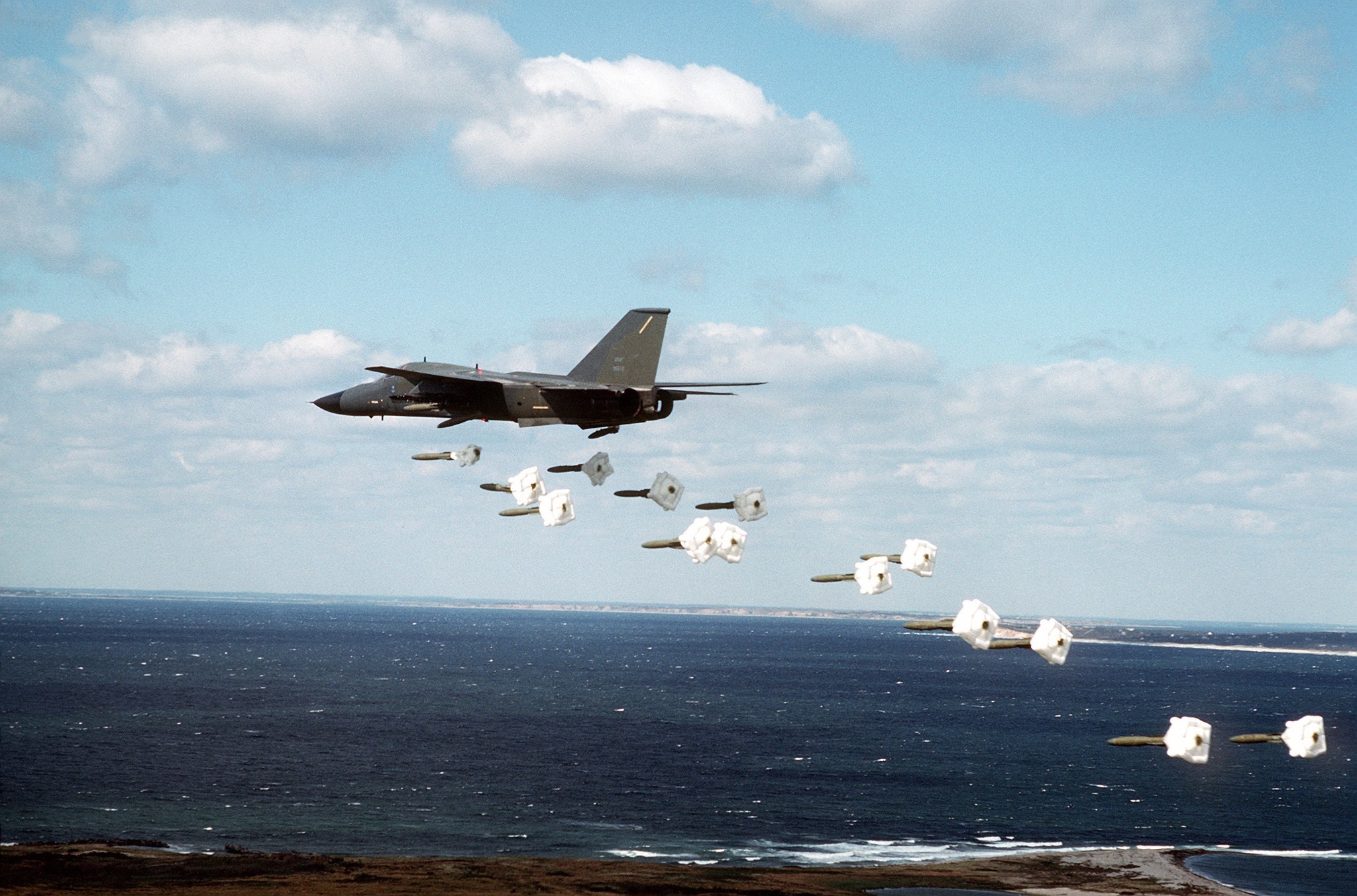This fighter was so advanced, we sent a recording to aliens

An F-111 Aardvark from the 509th Bombardment Wing, flies over the coast. (Courtesy photo from Dee Gullickson)
SUMMARY
Alright, I know the headline makes it sound like I might have just suffered a blow to the head, but stick with me. Before the A-10 Warthog, the F-111 Aardvark dominated the low-flying missions. And scientists included a recording of it on the Voyager Golden Record. So if ET ever really does phone home, his parents will know better than to come here and risk the Aardvark's wrath.
The need for a Pig
For decades, U.S. bomber superiority plans were simple. America planned to dominate the Soviet Union in a war by sending high-altitude bombers to destroy everything. If anything survived, they could send more high-altitude bombers or lower-level attack aircraft later. Simple. Done and dusted. Let's go get lunch.
But then the Soviet Union nailed a U-2 Dragon Lady spy plane at over 70,000 feet in the air. Suddenly, the idea that high-altitude bombers could deliver payloads, nuclear or otherwise, with certainty felt naive. The Air Force needed a new method of guaranteeing nuclear retaliation and a deep strike capability.
Luckily, the Air Force and NASA had been playing with neat plane designs in the 1950s, including "variable geometry" or "swing-wing" planes. Those might sound euphemisms for a key party, but they're actually the basis for birds' natural flight. Birds extend their wings and make them longer to fly slow and get great lift, and they tuck them close to fly fast and strike hard.
The Air Force and Navy needed new fighters that could extend their wings to take off from dirt runways and carriers but then tuck them tight to fly fast on penetration missions below radar coverage. This low-flying, basically through the dirt, drew comparisons to pigs with their noses in the mud.
The controversial F-111 Aardvark
The Navy and Air Force had similar, but not identical, needs for a new fighter. And the F-111 became the first joint aircraft procurement program.
Like more modern joint programs, it quickly ran into problems. Both services wanted a new fighter, but the Navy was focused on fleet air defense. They needed something fast that could down as many fighters and missiles as possible. The Air Force wanted a new fighter but gave a requirements list filled with ground-attack and bomber tasks.
Plus, since both services wanted to try out the variable-sweep wings NASA used on its X-5 experiment aircraft, the resulting requirements gave the plane, in a description borrowed from an MIT case study, a "schizophrenic nature."
Weight problems, delays, and cost overruns eventually resulted in the Navy abandoning the program, allowing designers to finish up the Air Force requirements and put the F-111 into service. It had great terrain radar to let it fly at treetop level, could achieve Mach 2 flight, and was great at killing stuff on the ground. And it looked great doing it with its fancy, variable wings, though the mechanisms necessary made the aircraft very heavy.
The popular ground-attack "fighter" jet
The F-111 was not really a fighter. But it quickly became popular in its ground-attack role. It could take off or land in 2,000 feet, fly supersonic at high or low altitude, and cross oceans without refueling. It first fought in Vietnam as a low- and high-altitude bomber, then in Libya, and then in Desert Storm.
An unarmed electronic warfare version of the jet even got credit for the first aerial kill of Desert Storm. It got into a maneuvering duel with an Iraqi fighter until it forced the Iraqi jet to crash into the ground. Yeah, the Pig got in a wrestling match in the mud and killed the other guy. Its armed counterparts racked up the tank kills, though, taking out over 1,500 pieces of Iraqi armor.
In all, over 560 of the aircraft flew, predominantly in the U.S. and Australian Air Forces. They were popular at air shows where they would show off their variable wings and dump fuel into the afterburners, creating a flame 100 to 300 feet long.
The F-111 goes to space
Alright, sounds like a fun plane, but what's the aliens nonsense? Well, NASA decided to launch the Voyager 1 and Voyager 2 space probes with a mission to tour the outer planets and then continue to interstellar space, a region no man-made object had ever entered.
A council led by Carl Sagan picked a few dozen images, some sound recordings, and a brainwave recording to go with the probes. The Golden Record on each probe contains mostly human speech, a few songs, lots of nature sounds, and a few bits of sound from human technology, like a tractor, a Saturn V rocket, and the F-111 conducting a flyby.
The entire point of the Voyager Golden Record is to tell any alien civilization that finds it that Earth existed, that humans lived and loved here, and that we had the coolest plane that ever flew.
SHARE
